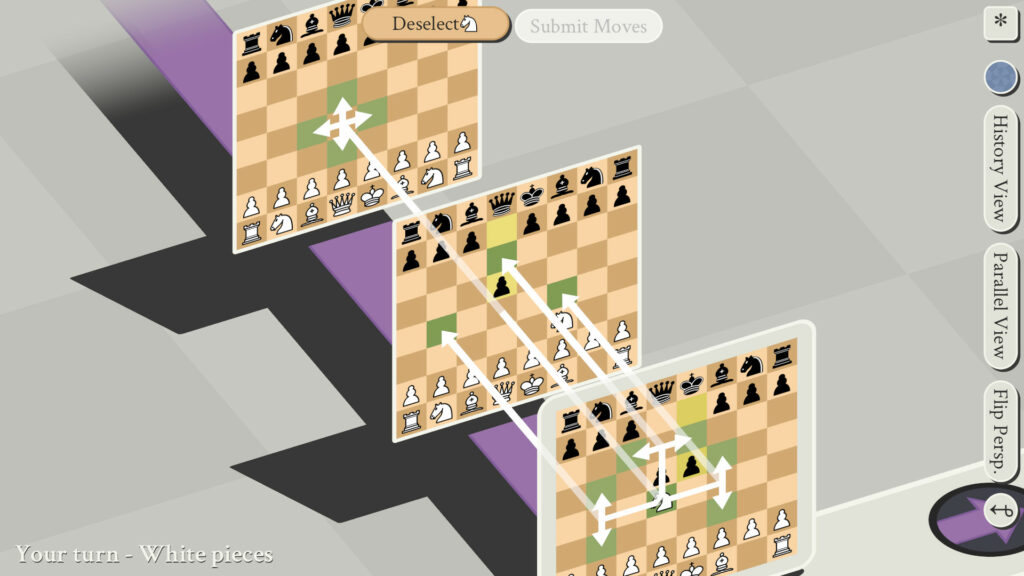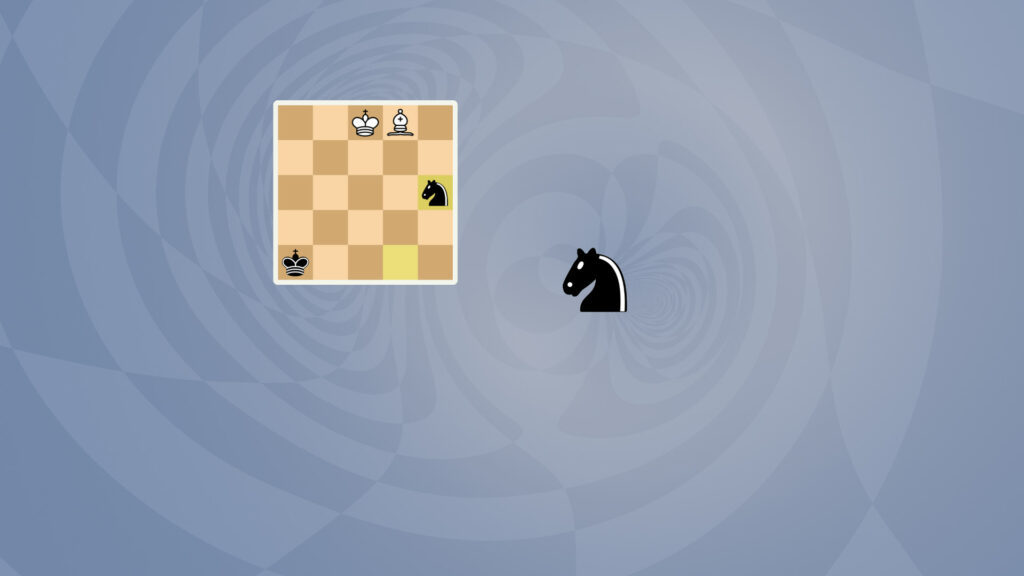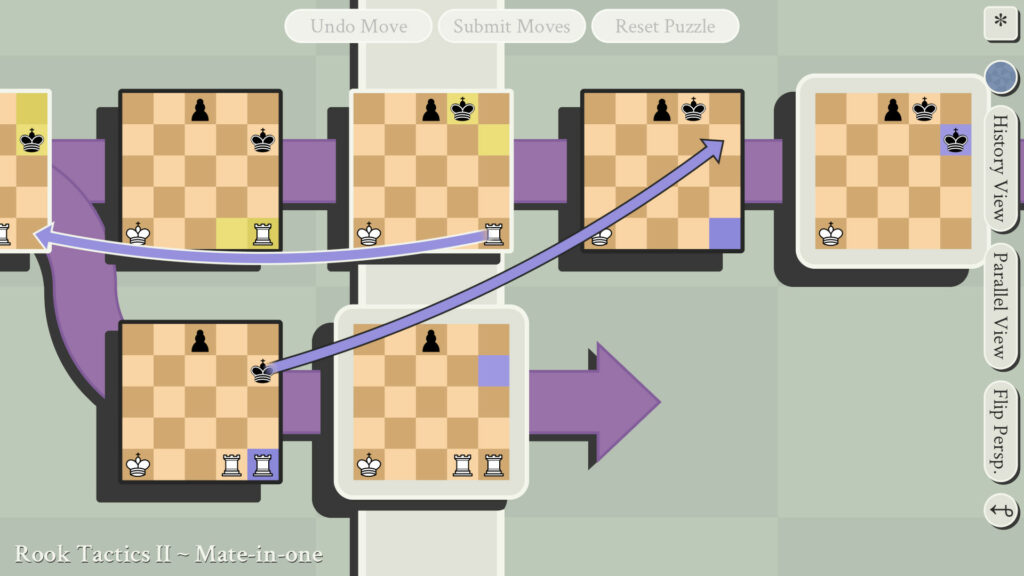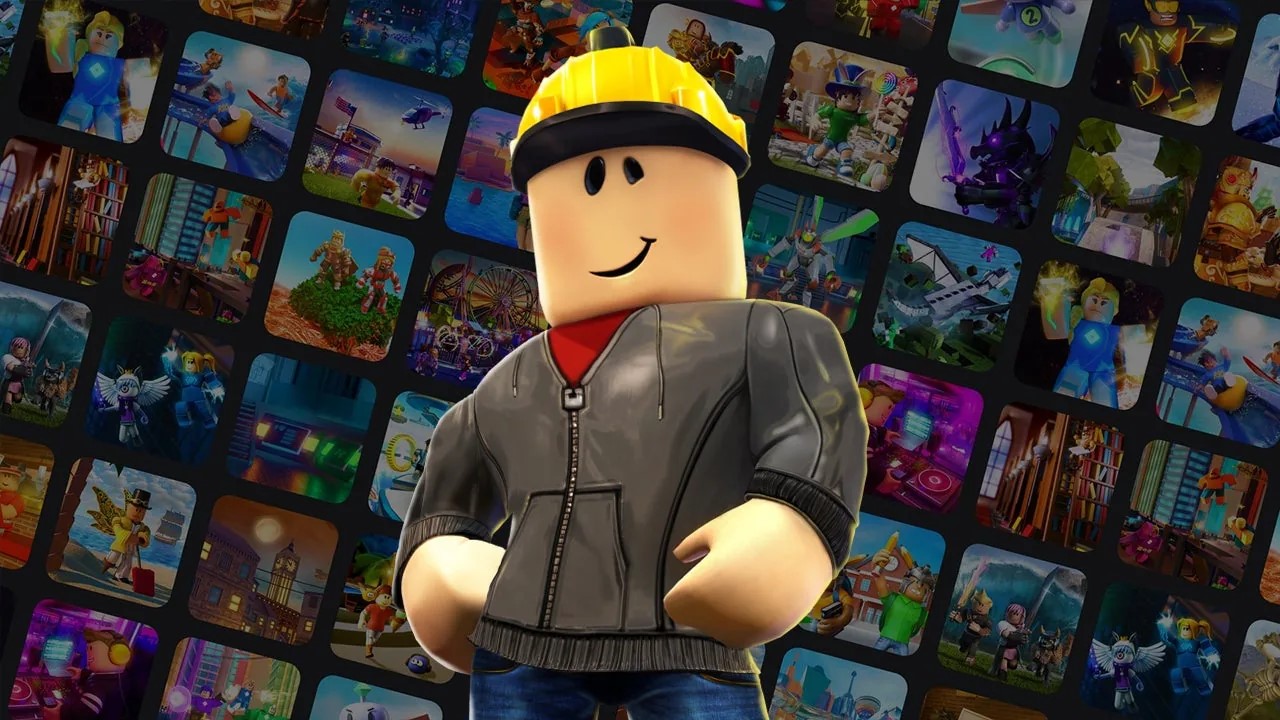- 5D Chess with Multidimensional Time Travel is a Chess variant made by Conor Petersen.
- The game pushes Chess to its boundaries by introducing a dimension of time, as well as different branching timelines.
- To win the game, you have to checkmate your opponent in the present, surround them in the past, and also erase the future when necessary.
The world of chess has captivated strategists for centuries. The fact that it hasn’t needed any balance updates throughout its lifespan just goes to show how well-thought-out and polished the original game is.
However, for those seeking a mind-bending challenge, a new variant has emerged – 5D Chess with Multidimensional Time Travel. This isn’t your grandfather’s chess; it’s a mind-warping dance across realities, where pieces can manipulate the very fabric of time to secure victory.
Introducing 2 New Dimensions
Chess is a very simple game. You and your opponent take turns moving a piece, trying to capture the others’ pieces in order to checkmate the enemy king. Each time you can move a piece, you can move a bunch of steps vertically or horizontally. In technical terms, you can move in the x and y axes, or in 2 dimensions.
5D Chess With Multidimensional Time Travel introduces two more dimensions into the mix. You can move across different universes or parallel timelines, creating a new board where you can play the game. The piece is removed from your own board, and instead now resides in the other.
5D Chess also introduces traversal through time, causing you to send a piece back to the past. Keep in mind that all these moves can do the traditional chess acts of capturing, checking, and even checkmating.
How Do The Pieces Work?

Understanding how traditional chess works with the x and y coordinates is necessary to explain how you can move your pieces. For example, the Knight traditionally moved 2 spaces in one axis, and one in the other. It isn’t any different in 5D chess. You can either move 2 spaces up into a different timeline and one place back in time. You can also switch traditional moves with the newer ones, moving two spaces up and one back in time to capture a piece.
The Rook can move any amount of places in a single axis, either on the same board or through time. The King can move a single space across time. The Bishop does this weird move where it moves across time either horizontally or vertically, but it cannot move any more or any less than the number of boards you’re traveling back to. Yeah, you’ll have to play to figure it out. The Queen, as always, can do all of the above. For a complete rundown, you can watch a guide by Triple S Games.
Spicy Time Travel Shenanigans

When you’re playing a game, you have a present marker that describes the current state of the board. When you create a new timeline, the present marker moves to that timeline. In the case of multiple timelines, the present marker is always at the chronologically oldest active one, or the leftmost one.
You have to move a piece in the present board, but any other moves are optional. I haven’t gotten the hang of the game myself yet, but you have to keep in mind that you’re not forced into just a single move. In the last game I played with a friend, we were each submitting around 5 moves per turn, on different boards.
How Do You Win?

To win in 5D Chess is the same as normal Chess; you just have to checkmate the enemy king. There are some nuances, though. For example, checking a King in a future board doesn’t matter until the present marker catches up. Similarly, moving a piece into the past that creates a separate timeline moves the present marker back, saving the King for the time. You also have to keep in mind that the King, like other pieces, can travel back in time.
There’s this joke that goes around about how someone’s playing 5D Chess when they’re doing something super smart, and trying to win this game really shows just how difficult it can be. Even Chess Grandmaster Hikaru Nakamura was racking his head trying to understand the game.
You have to checkmate your opponent in the present, ensure a gameplan that surrounds them in the past, and also erase the future when necessary. Often, you can also checkmate an opponent accidentally by checking them in the past, which is always fun.
Thank you! Please share your positive feedback. 🔋
How could we improve this post? Please Help us. 😔
Heya, I’m Asad (Irre) Kashif! I’ve been writing about anything and everything since as far back as I can remember. Professionally, I started writing five years ago, working both as a ghostwriter and writing under my own name. As a published author and a council member in Orpheus, my journey in the world of writing has been fulfilling and dynamic.
I still cherish the essays I wrote about my favorite PS2 games, and I’m thrilled to have transformed my passion for game journalism into a career. I’m a theory crafter for Genshin Impact (and now Wuthering Waves) and have a deep love for roguelites and roguelikes. While I prefer indie games for their distinct aesthetic and vibes, I do enjoy triple-A games occasionally. I’ve also been playing League since season 6, and I main Akali! I have a keen interest in discovering and playing more obscure games, as well as researching forgotten titles. Additionally, I am a front-end programmer who dabbles a bit in gamedev occasionally.


 Threads
Threads

